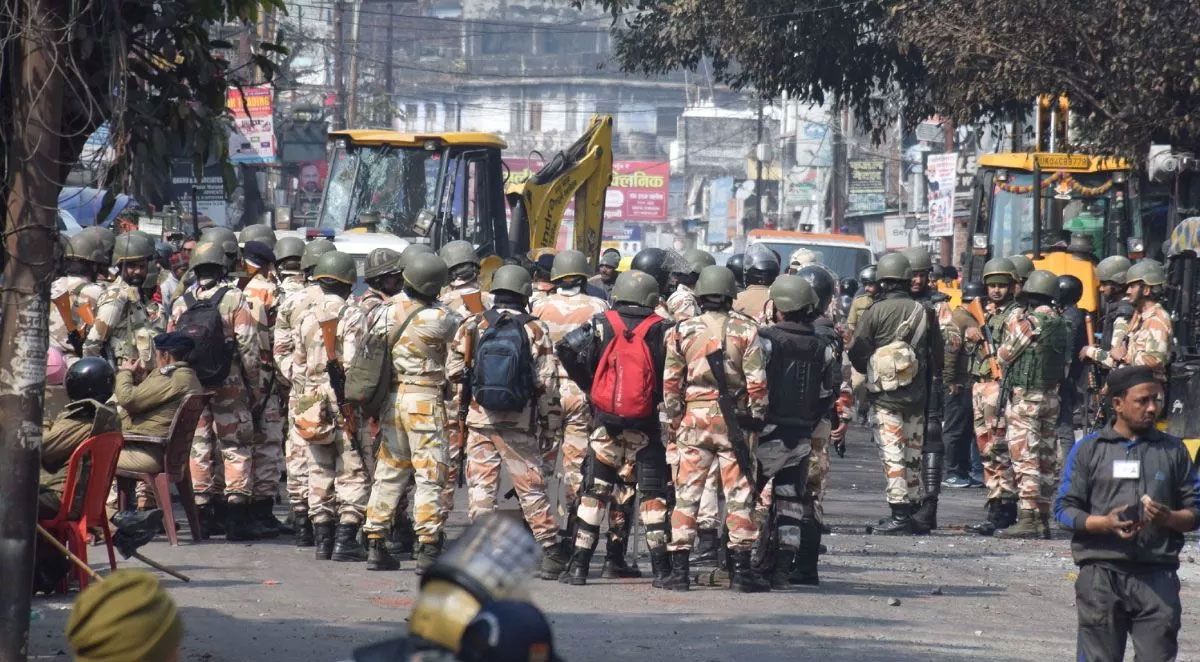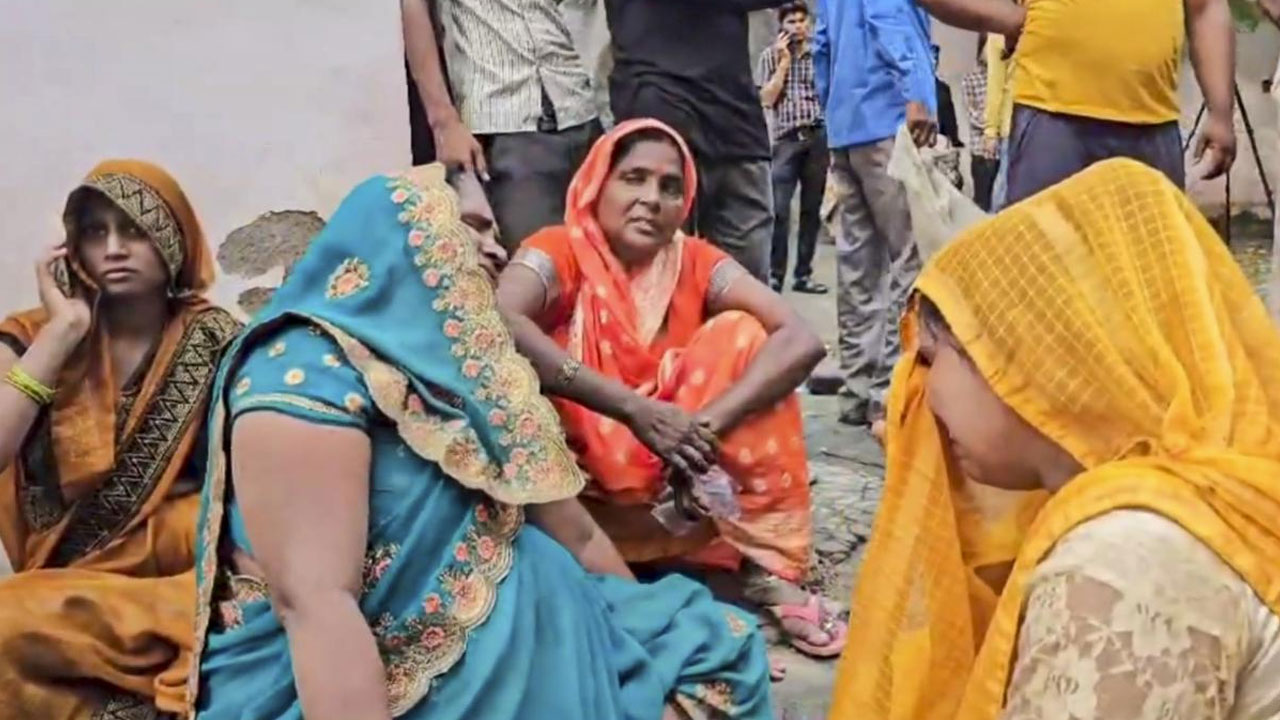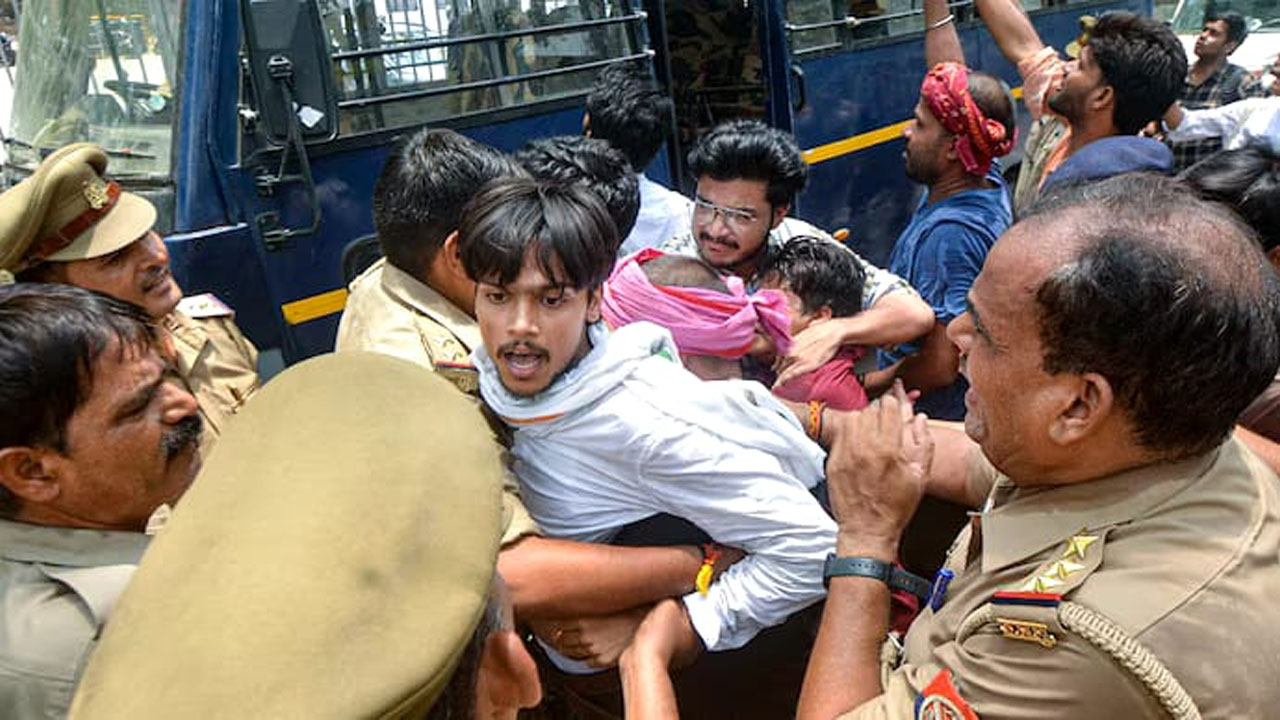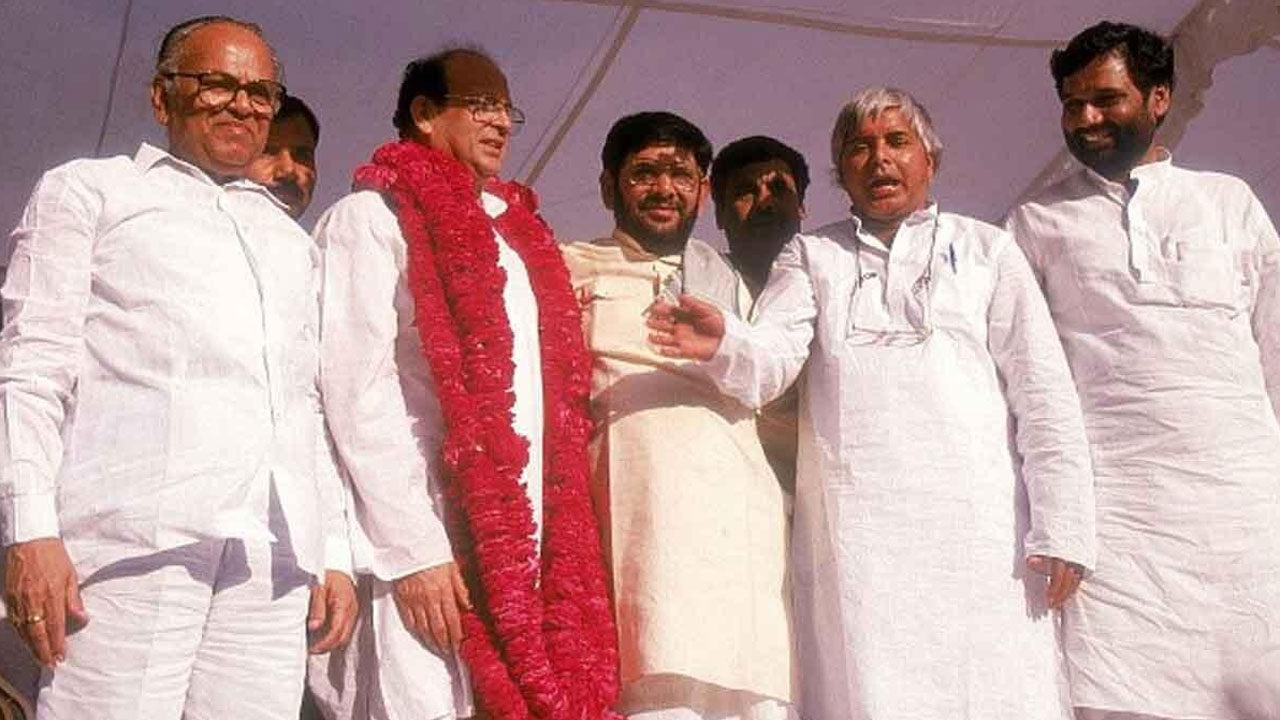At the outset, a narrative was built about Uttarakhand and the state began to be called Dev Bhumi (Land of the Gods). Now, once a state is designated Dev Bhumi, there will be two consequences. First, it becomes primarily a state of the Hindus, rendering non-Hindus, especially the Muslims and the Christians, outsiders and aliens. Second, all the other states, by implication, become land of the demons. Hindutva was first invoked in this Dev Bhumi in 1994 – when it was still a part of Uttar Pradesh – to oppose the then chief minister Mulayam Singh Yadav’s decision to grant 27 per cent reservations to the backward castes. The protests later took the form of a movement for a separate Uttarakhand state. This movement was led by the Rashtriya Swayamsevak Sangh (RSS) and the Bharatiya Janata Party (BJP) and it met with success because the Brahmin lobby of the Congress backed it.
Subsequently, Uttarakhand was ruled alternately by the Congress and the BJP, both furthering the Hindutva agenda through their politics. With the Narendra Modi-led BJP forming its government at the Centre and in many states, Muslim-hatred became a tool for boosting Hindutva. Cow slaughter and love jihad became key issues, mob-lynching became the new normal and anti-conversion laws were enacted. All this painted the Muslims as anti-nationals, terrorists and unwanted citizens. Despite all this, the RSS-BJP were unable to strike their roots as deep in Uttarakhand as they had done in Uttar Pradesh thanks to Yogi Adityanath. The BJP frequently changed its chief ministers in Uttarakhand till they found the perfect man in Pushkar Singh Dhami, who successfully fulfilled the wishes of the BJP high command.
One of the first announcements of Dhami after taking over as the chief minister was that Uniform Civil Code (UCC) would be implemented in the state. He got the UCC Bill cleared in the first session of the Vidhan Sabha. UCC has been on the RSS agenda for a long time and the BJP seems to be testing the waters by implementing it in Uttarakhand. However, the Scheduled Tribes, among whom polygamy is very common, have been kept out of the purview of the proposed code. How then the code remains “uniform” is anybody’s guess.
Dhami knew that only oppression of Muslims could give a push to Hindutva. The UCC Bill was tabled in the Vidhan Sabha on 6 February 2024 and two days later, on 8 February, Dhami got a madrasa and a mosque bulldozed in the Banbhoolpura area of Haldwani. To suppress the protests by Muslims, shoot-at-sight orders were issued. Five persons were killed in police firing. It was claimed that stones were pelted from the rooftops of Muslim homes, injuring many policemen. But in videos which have gone viral in social media, stone pelters can be heard saying “katua” (a derogatory term for Muslim men). Clearly, the stone throwers were not Muslim but RSS-BJP men. Can we imagine Muslims abusing themselves, that too using an Islamophobic slur?
It is also claimed that miscreants indulged in arson and set a police station and a police vehicle on fire. Needless to say, nobody bothered to find out the religious affiliations of the arsonists. Dhami later said that the violence was pre-planned and that those who tried to poison the atmosphere of Dev Bhumi would not be spared. That was enough hint for the police, which unleashed its might on Muslim localities. Cops barged into homes and picked up Muslim youth. Some terrified families had themselves locked in their homes from the outside. But locks were broken and the residents were subjected to all kinds of atrocities. The houses of some poor Muslims were bulldozed. Videos of women of such families narrating their ordeal have surfaced in social media. Many Muslim families fled to neighbouring districts and police are conducting raids there to apprehend them. It was the chief minister who poisoned the atmosphere, it was the chief minister who ignited trouble and it is the chief minister who is supervising the crackdown on the victims, holding them culpable for “planned violence”. He is the murderer, the witness and the judge – all rolled into one.
The BJP’s top leadership is elated. What Adityanath had done in Uttar Pradesh, Dhami has successfully replicated in Uttarakhand. Hatred for Muslims has been whipped up in both the states and this augurs well for the politics of Hindu Rashtra.
Coming to specifics, why was the madrasa demolished? Was it a sudden and spontaneous action? No, not at all. Its script was being written for the past several months. In fact, it would not be wrong to say that the acts of commission and omission by both the state government and the High Court led to the demolitions. The madrasa and mosque at Banbhoolpura in Haldwani were ostensibly razed as these stood on Nazul land, which belongs to the government.
First, let us try to understand what Nazul land is. Asad Rehman has explained “Nazul land” in The Indian Express dated 13 February 2024. It is true that Nazul land is owned by the government but it is rarely used as such. Generally, the land is allotted to different institutions on lease for a period extending from 15 to 90 years in return for payment of an annual rent. Nazul land is generally put to public use such as for the building of schools, hospitals and village panchayat offices. In some cities, Nazul land has also been leased to housing societies. How did this land become available? During British rule, many battles were fought between the princely states and the British army. Whenever the states lost the battles, the British used to confiscate the land owned by the rulers. After independence, this land was supposed to be returned to the original owners. However, many of these erstwhile rulers did not have documents to prove their ownership. Such lands were declared “Nazul”, with the respective state governments becoming their owners.

According to the Haldwani district administration, the land on which the madrasa and the mosque stood was registered as Nazul land and was owned by the local municipal corporation. The district administration said it had held discussions with the municipal corporation for 15-20 days in January to demolish the two buildings to prevent traffic jams. On 30 January, it issued a notice saying that either the encroachments be removed or documents proving ownership be presented within a period of three days. The management of the madrasa moved the High Court against the notice. The court fixed 14 February as the date for hearing but did not stay the notice. On 3 February, representatives of the madrasa management met the municipal corporation officials, seeking time till 14 February. They gave a written undertaking that they would accept the court order. But the administration bulldozed the madrasa and the mosque before the High Court could even hear the matter.
On the first impression, this action by the government and the administration was arbitrary and illegal and was driven by communal hatred. This was part of a well-scripted conspiracy to instigate riots and thus give a fillip to Hindutva. There are many unanswered questions. For one, why the hurry to pull down the madrasa and the mosque? Could the administration not have waited till the High Court had heard the matter? Is a three-day notice to remove any construction adequate? Normally, 15 days to three months are given in such cases. But in this case, only three days were given. Clearly, the objective was to oppress the Muslims. The notice did not pass the test of legality. The excuse that the constructions were causing traffic jams was baseless. There were no complaints from the public in this regard. The madrasa was built by a certain Abdul Malik about 20 years ago. How could it have suddenly become an impediment to traffic? Why did the administration suddenly wake up to the need for unhindered flow of traffic? The fact is that the administration was under pressure from the chief minister and was determined to raze the madrasa and the mosque. There is also a possibility that pressure was brought to bear upon the High Court to ensure that it did not stay the notice. The court was well aware that unless the notice was stayed, it continued to be legally binding and the administration could take action on its basis. Why, then, did the court not bother to issue a stay order? Now, even if the court took up the case for hearing on 14 February, what purpose would it serve? The buildings have already been demolished and the government has taken possession of the land.
Another question is whether the government, the administration and the court would have acted in the same manner if the structure were not a mosque but a Hindu temple. Innumerable temples are sitting on encroached land. Can the BJP governments dare demolish them? Instead, it is even demolishing mosques that have not encroached, claiming that they stand on ruins of temples. Encroachment has come as another handy excuse for pulling down mosques. Chief Minister Dhami is now saying that a garden and a police station would be built on the land where the madrasa and mosque stood. Apparently, only mosques impede traffic flow, police stations don’t. The government could have easily leased out the Nazul land to the madrasa. But pulling down mosques is in fashion in BJP-ruled states and expecting the governments to show large-heartedness is futile.
It is also being said that a “gaushala” will come up on the disputed plot of land. There is a possibility that the land may be allotted for a song to some BJP leader to set up the gaushala. It is more than clear that the demolition was nothing but an attempt to ignite a Hindu-Muslim riot.
The chief minister is describing the reaction of the Muslim community to the demolition as wanton violence and terrorism. This is in keeping with the BJP culture. There is a Hindi saying which roughly translates as “the mighty will beat you up and won’t allow you to even cry”. They will oppress you, they will persecute you and if you lift a pebble in response, you will be branded as a terrorist. There are reports that the government has confiscated the properties of Abdul Malik and his sons. Apparently, turning the victims into culprits and committing excesses on them is the definition of Ram Rajya in this Dev Bhumi. One of Kabir’s couplet warns, “Don’t harass the weak, for their wails can reduce the perpetrators to ashes.” It doesn’t seem to be happening. But what we can say with a degree of certainty is that if a community is constantly targeted, harassed to no end, turned into an object of hatred, it may keep quiet for some time for fear of reprisals but not for eternity. One day, some day, it may lose patience. This is what Taukir Raza, a Muslim religious preacher from Bareilly, hinted at.
As well-known poet Kalim Aziz has said:
“Daman pe koyee cheent, na khanjar par koyee daag,
Tum katl karo ho ki karamaat karo ho”
[There is not a drop (of blood) on your clothes; not a smudge on your dagger. Have you committed a murder or pulled off a miracle?]
(Translated from the original Hindi by Amrish Herdenia)
Forward Press also publishes books on Bahujan issues. Forward Press Books sheds light on the widespread problems as well as the finer aspects of Bahujan (Dalit, OBC, Adivasi, Nomadic, Pasmanda) society, culture, literature and politics. Contact us for a list of FP Books’ titles and to order. Mobile: +917827427311, Email: info@forwardmagazine.in)





